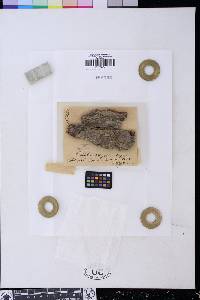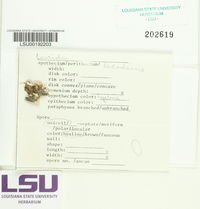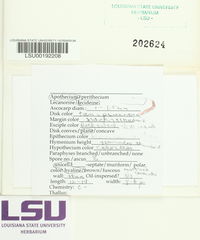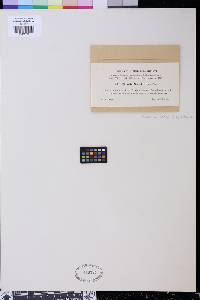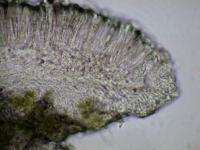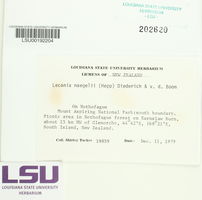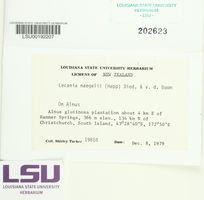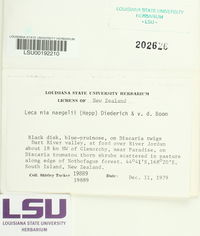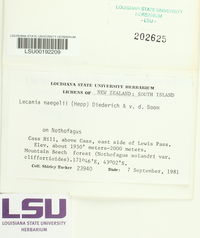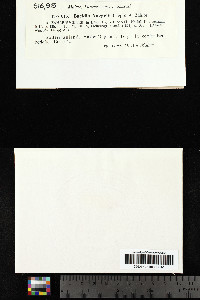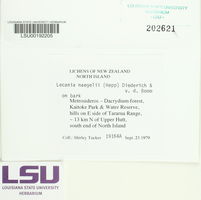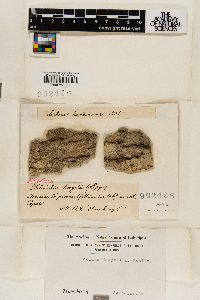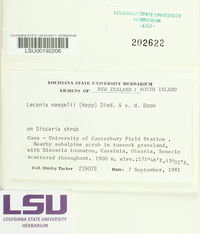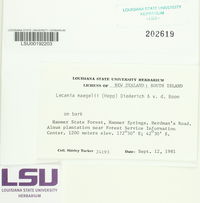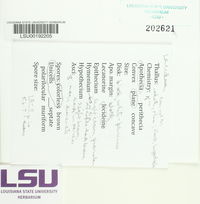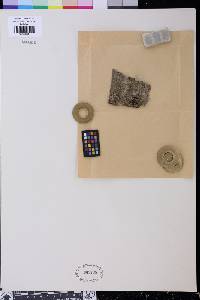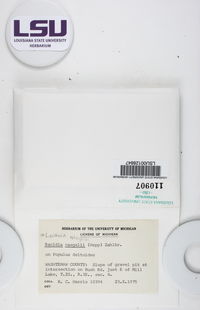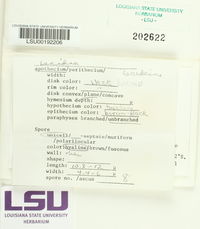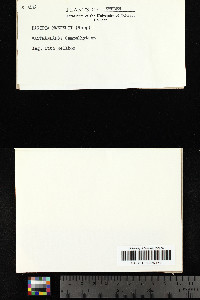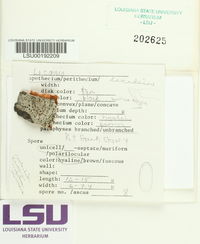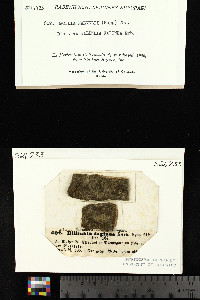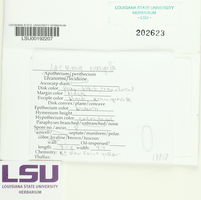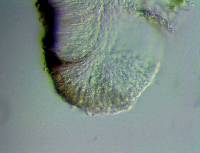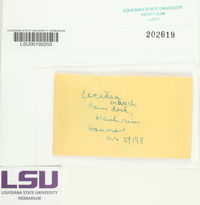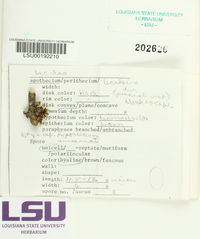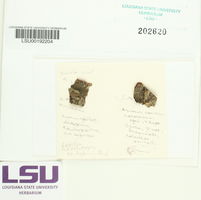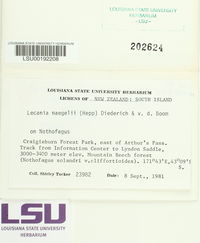
Consortium of Lichen Herbaria
- building a Global Consortium of Bryophytes and Lichens as keystones of cryptobiotic communities -
- Home
- Search
- Images
- Species Checklists
- US States: O-Z >
- US National Parks
- Central America
- South America
- US National Parks
- Southern Subpolar Region
|
|
|
|
Family: Ramalinaceae
[Bacidia naegelii (Hepp) Zahlbr., moreBacidia naegelii f. cervinocincta Erichsen, Bacidia naegelii f. naegelii (Hepp) Zahlbr., Bacidia naegelii f. pallescens (Anzi) Grummann, Bacidia naegelii f. vacillans (Nyl.) Zahlbr., Biatora naegelii Hepp, Bilimbia naegelii (Hepp) Kremp., Bilimbia sphaeroides var. naegelii (Hepp) Boistel, Buellia naegelii (Hepp) McClatchie, Lecaniella naegelii (Hepp) S.Y. Kondr., Lecanora naegelii (Hepp) Nyl., Lecidea naegelii (Hepp) Stizenb., Lecidea naegelii var. naegelii (Hepp) Stizenb., Lecidea naegelii var. vacillans (Nyl.) Vain., Patellaria naegelii (Hepp) Müll.Arg., Sporoblastia naegelii (Hepp) Trevis., Weitenwebera naegelii (Hepp) Poetsch] |
Nash, T.H., Ryan, B.D., Gries, C., Bungartz, F., (eds.) 2004. Lichen Flora of the Greater Sonoran Desert Region. Vol 2. Thallus: crustose, thin, effuse, continuous, scurfy granulose to minutely granular-warted granules: scale-like, smooth or wrinkled, rimosely cracked or not, usually forming small patches amongst other crusts surface: pale green-gray, ashy or white or pale brown-gray, thin, up to 0.2(-0.3) mm thick cortex: not developed medulla: indiscernible; algal layer: with algae cells 6-16 µm in diam. Apothecia: scattered but often in small groups, sometimes crowded and deformed, sessile, 0.2-0.6(-0.8) mm in diam. disc: +white, blue-gray, gray-brown to black, often piebald, yellowish rose or clouded flesh color, pink, soon reddish brown to dark brown and then blackening, pale and translucent when wet, long remaining plane, finally convex, epruinose margin: without a thalline part but some algae rarely reaching the parathecium below, entire amphithecium: absent parathecium: rather well developed, concolorous with or usually paler than disc, pink to red-brown, scarcely evident, disappearing, laterally up to c. 40 µm wide, colorless to pale yellow, pale brown, or yellow-brown, or with dark brown upper parts, color intensifying K, N+ intensifying, without crystals, the hyphae with expanded, +ellipsoid lumina to 3 µm wide epihymenium: colorless or more usually pale green, greenish gray or brown to blue-green, K+ intensifying green, K-, N+ red to purple, rarely partly or totally brown to purplish brown and then K+ intensifying purple, N+ orange, sometimes with a mixture of green and brown pigments, without crystals hymenium: hyaline, (45-)50-65 µm tall, I+ blue; paraphyses: (1-)1.5-2 µm wide below, simple or forked in upper part, apically +clavate, swollen to 5 µm wide, often colored, distinct but coherent; hypothecium: hyaline or pale yellow, intensifying in K or N asci: Bacidia-type, 8-spored ascospores: hyaline, (0-)1-3(-5) septate, oblong to fusiform to ellipsoid or dactyloid, often +curved to almost reniform (13-)14-20(-25) x (3.5-)4-5.5(-6) µm Pycnidia: very rare, immersed in thallus, c.120 µm in diam. or 200300 µm, hyaline but upper part red-brown; ostiole: up to c. 100 µm deep, dark olivaceous brown, conidia: filiform, slightly to strong curved, 14-18 x 0.8 µm [also macroconidia 33-44 x 1.2-1.5 µm and 7-9-septate (Ekman 1996)] Spot tests: thallus K-, C-, P- Secondary metabolites: none detected. Substrate and ecology: on nutrient-rich (Xanthoria-dominated communities) bark of broad-leaved trees and shrubs under fairly sunny conditions at low elevations, very rarely on nutrient-rich rocks, often common in unpolluted areas World distribution: widely distributed throughout Europe; North America, and Asia Sonoran distribution: southern California. Notes: Although septate macroconidia are mentioned from Lecania naegelii in Ekman (1996, 41), we never detected these in any of the Sonoran specimens. Most California specimens labeled as L. naegelii were misidentified and often they belong to Cliostomum griffithii, a species which is common in the western Sonora region, but has 1-septate spores and conspicuous black pycnidia among other differences. Lecania naegelii is characterized (among Sonoran species of Lecania) by its 3-septate ascospores, its lack of a amphithecium, and its thin continuous scurfy granulose thallus. It grows in small patches among Sonoran species of Bacidia s. lato and was reported as Bacidia naegelii by Hasse. It has a crustose thallus, pale blue or brown (rarely pink) discs, a C- and either green and K- or brown, K+ purple epihymenium, a pale hypothecium, and 3-septate, fusiform to reniform ascospores (3-5 times as long as wide). It has often been treated as a member of Bacidia, where it, however, does not belong, and has recently been transferred to Lecania. However, recent molecular evidence indicates that L. naegelii is instead closely related to Bacidina phacodes (Ekman 2001). Awaiting for further clarification, its most recent classification (as a Lecania) is used here. It is probably an overlooked species. |
|
|
|
Powered by Symbiota





